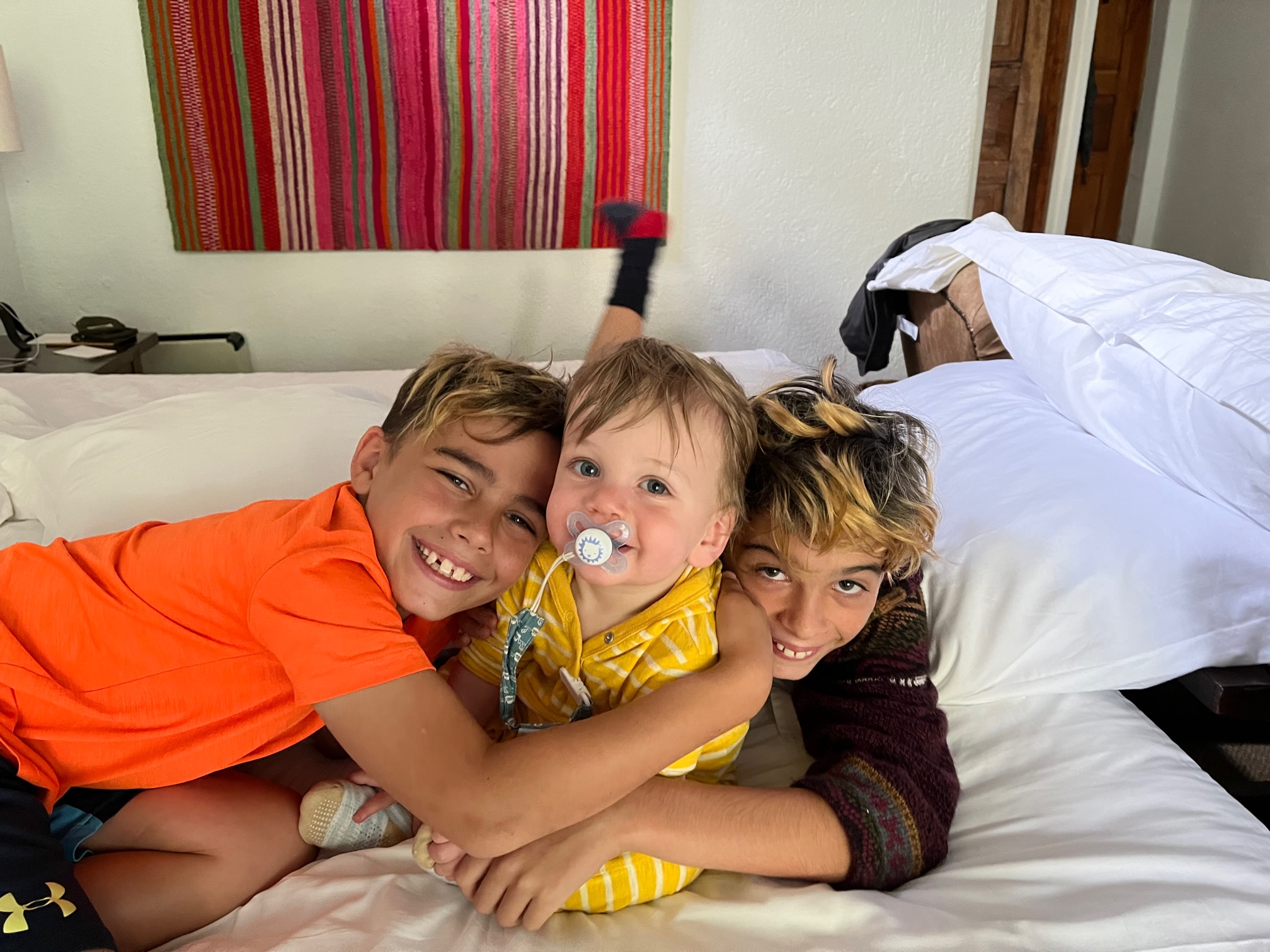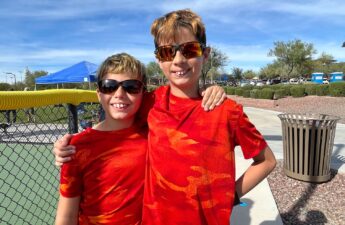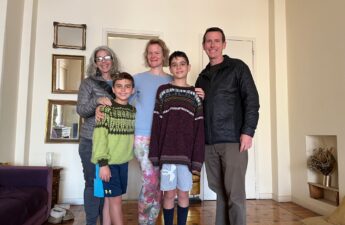We love traveling, but we miss our family while we are gone. It was exciting that my dad, his girlfriend Kay, my sister Emily, her husband Jonathan, and our adorable nephew Milo traveled to Peru! We are thankful when family and friends take the time and go out of their comfort zones to meet us out in the world.


There were some hiccups at the beginning of the trip. My dad and sister got stuck in Lima due to an air traffic controller strike. They got to spend an extra day exploring Lima. They were supposed to arrive in Cusco on Thursday, and they did not make it until Friday night. Strikes and protests are common in South America. The people are constantly fighting extreme social inequality and corrupt governments.


The day after they arrived in Cusco, we took a city tour with our guide, Juan Carlos. We visited ruins built by the Incas in the 15th century, including the Q’enco Archaeological Complex and Saqsayhuamán. We also saw Qurikancha an important Inka temple converted into a catholic church. It once was covered in gold, but the Spanish took all of the gold when they invaded Peru.



We learned about how the Incas were advanced in building, math, and farming. The Incas were spiritual and took care of Mother Earth (Pacha Mama). Balance in nature was important to the Incas.
After the full-day tour, we went to the chocolate museum in Cusco and took a two-hour chocolate-making lesson. Our host was lively and funny. We had a great time making chocolate. It wasn’t a competition (Emily). Ha!



Lucas and Henry babysat for Milo several times during the trip so we could hang out with Emily and Jonathan.
On day two of our trip, we traveled to the Sacred Valley. We first stopped in Chinchero to observe the Quechua weaving process. We visited a compound where several families live and weave. We saw llamas, alpacas, and Guinea pigs there. We even got to feed the llamas and alpacas. Michael got cozy with the llamas.



The Quechua women showed us how they naturally dye the thread they use to weave beautiful products. Some of the red colors come from bugs that live on cacti. The other dyes come from plants.

The women can spend up to one-month working six hours a day to weave a table runner. Lucas bought an alpaca sweater here and he wears it all the time.


Next, we stopped to have lunch in the home of a Quechua family near Moray. Our host was Natividad, and we got to meet her family. She prepared boiled corn and potatoes and a creamy potato soup.

We saw the small kitchen where she prepared the meal. Her husband was using a large oven in their home to make food for a funeral. In their community, only a few houses have these large ovens and they are only used for community cooking.


Natividad had many animals. A friendly cat sat on my lap during lunch. There were Guinea pigs in the kitchen running around the floor. One even came out to eat the table scraps that we dropped. We also saw dogs, ducks, and sheep. Natividad and her family grow corn and quinoa. Many of her kids are off in Cusco studying university.


After lunch, we stopped at the Inka ruins in Moray. These are circular terraces with irrigation used by the Incas for farming. The different levels have varying temperatures like microclimates in greenhouses to grow a variety of crops.


Our last stop before Ollantaytambo and the train to Machu Picchu was the salt mines in Moras. There are approximately 4,500 salt wells on the hill. Salt is harvested from these salt mines, but tourism is now the biggest moneymaker for the community.


We drove through Urubamba where we stayed for three weeks. A transportation strike (different from the air traffic controller strike) altered our plans. We headed straight to Machu Picchu instead of spending the night in Urubamba to ensure we could get there for our tour the following day.



